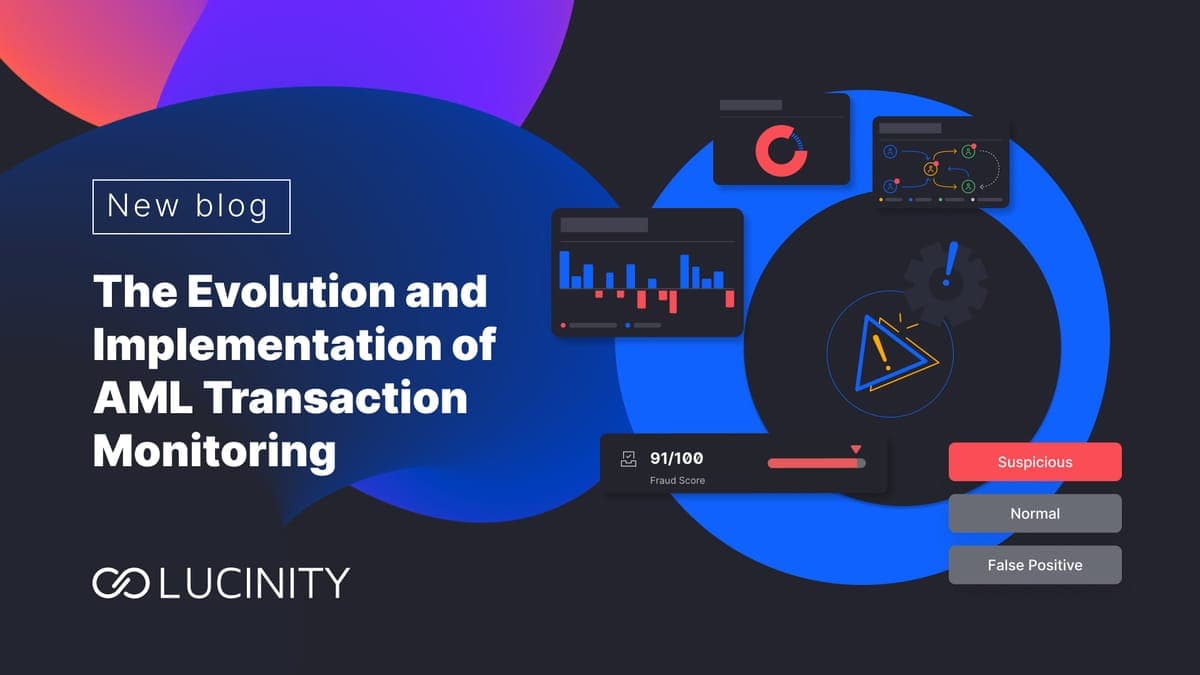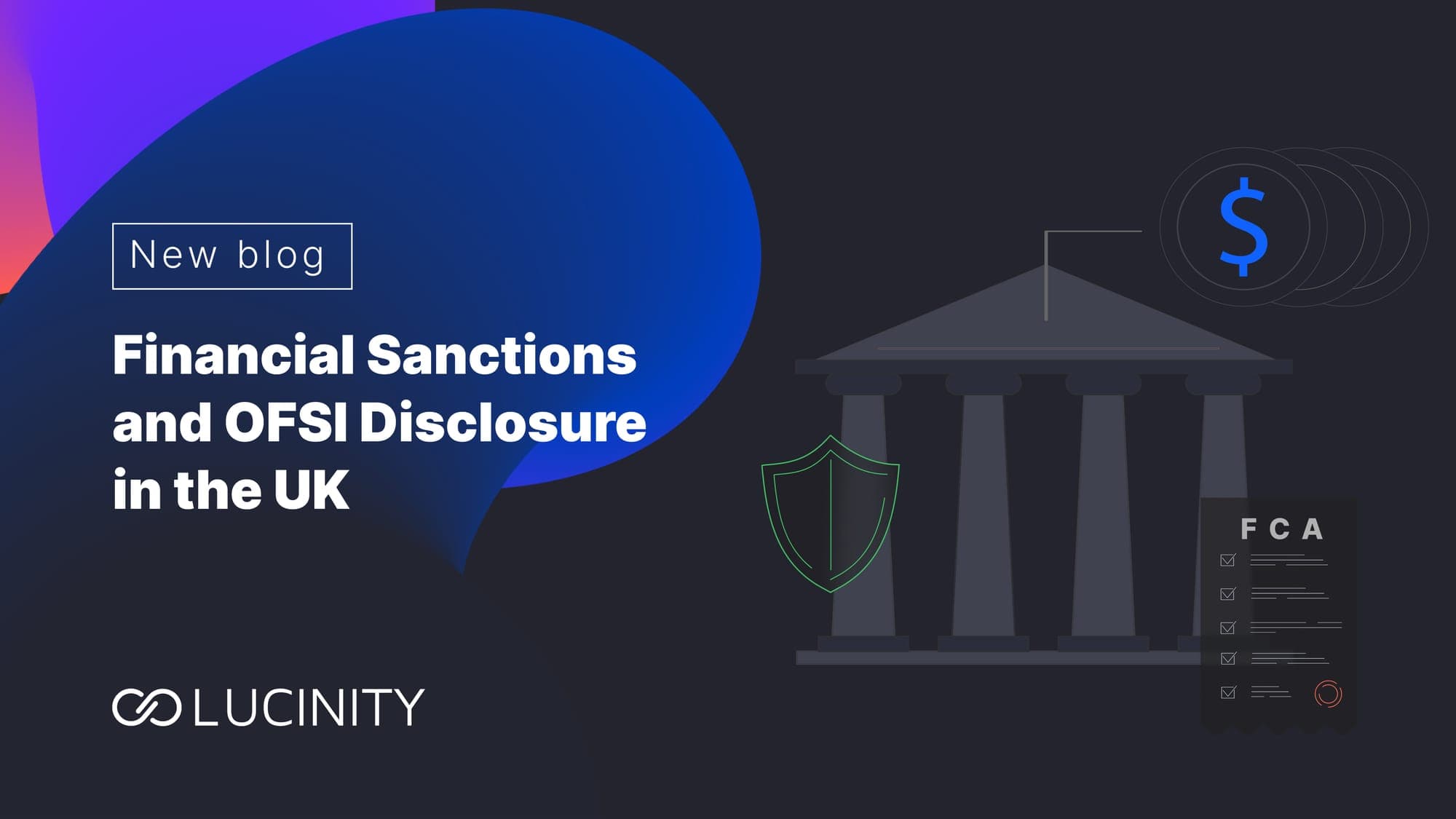FRAML Explained: Merging Fraud Prevention and Anti-Money Laundering
Explore the FRAML model, its applications in fraud and AML, the pros and cons, and how tools like Lucinity can bring together fraud and AML cases.
A study involving a mid-sized bank holding company revealed that implementing an integrated system for Fraud and AML led to monthly savings of nearly $90,000, combining efficiency gains and more accurate fraud detection measures. This example underscores the critical role of a FRAML model in enhancing financial crime prevention while delivering notable economic benefits.
In this blog, we explore what the FRAML model is, the pros and cons of implementing it, and how to leverage this model within your FinCrime prevention operations.
Fraud vs. Money Laundering
To begin, we must understand the terms ‘fraud’ and ‘money laundering’ along with the links and differences between them. This is because they are distinct but intertwined concepts that necessitate collaborative and cohesive prevention strategies.
Fraud involves intentional deception to achieve personal gain, such as identity theft or credit card fraud. It is the direct act of deceiving to acquire assets or money. Money laundering is the process of disguising the origins of illegally gained money. Typically, money laundering follows fraudulent activities, as it seeks to integrate these illicit funds into the legitimate financial system.
Therefore, fraud is often a predicate offense for money laundering. Money generated through fraudulent means is subsequently laundered to appear legitimate. This inherent connection underlines the importance of a unified strategy, where prevention and detection of both types of financial crimes are integrated. This is where the FRAML model comes in.
What is the FRAML Model?
The FRAML model, standing for Fraud and Anti-Money Laundering, is an innovative approach in the financial sector that integrates fraud management and AML activities, providing institutions with a comprehensive method to combat financial crimes. This union not only optimizes the detection of financial crimes but also positions institutions to adapt swiftly to emerging threats.
In this manner, the FRAML strategy combines multiple techniques that are applied across teams to create a comprehensive defense against financial crimes. FRAML is also a fast-evolving area with continuous advancements, making FRAML accessible and feasible for most financial institutions (FIs).
How Does FRAML Work?
The FRAML model provides an effective strategy for harmonizing the objectives of both fraud and AML teams, hence enabling them to work with a systematic and collaborative approach. By sharing customer data and using similar technological tools and techniques, both teams gain a wider and more informed perspective on potential threats.
This unification leads to a more holistic view of an organization's risk exposure, allowing for more effective and proactive risk management. So, what are the unified technologies used in the FRAML model?
The crucial components include real-time data analysis and fraud detection capabilities, followed by predictive AML strategies, dynamic transaction monitoring with AI, agile alert updating, and accurate alert-to-SAR (Suspicious Activity Report) conversion ratio reporting. Some other technology used in the FRAML model include data visualization models, artificial intelligence, machine learning, data integration, blockchain, cloud computing, biometric authentication, and data analysis for real-time insights.
All these technologies are facilitated by comprehensive KYC data feeds in the cloud, enabling financial institutions to make informed decisions about transactions' fraud and AML risk scores. They may also be bought together to form unified FRAML solutions that simplify the implementation of the FRAML model.
Pros and Cons of the FRAML Model
The FRAML model, integrating Fraud and Anti-Money Laundering approaches, offers significant advantages but also comes with its challenges.
Pros of the FRAML Model
- Operational Alignment and Cost-Effectiveness- FRAML aligns the activities and approaches of fraud and AML teams, enabling them to share customer data and use the same technological tools while conducting independent analyses. This alignment is more cost-effective than maintaining two separate teams and provides a more comprehensive view of financial crime risks.
- Enhanced Real-Time Detection and Prevention- Utilizing machine learning, FRAML equips anti-money laundering teams with tools for real-time detection and prevention of criminal activities, a capability traditionally associated with fraud management teams. This results in a more dynamic and effective approach to tackling financial crimes as they occur.
- Comprehensive Risk Assessment- By combining efforts in fraud and AML, FRAML models offer a broader perspective on customer risk profiles, assessing risks beyond the scope of either fraud or AML alone. This comprehensive view aids financial organizations in more effectively combating financial crimes.
Cons of the FRAML Model
- Data Orchestration Difficulties- Full integration of FRAML involves overcoming the complexities of data orchestration among various systems, some of which may have been in place for years. Adapting these systems to accommodate FRAML operations can be challenging, especially for larger, established financial institutions with fully separate fraud and AML teams.
- Timing Differences in Monitoring- The core difference in applying technology for fraud versus AML is the timing of monitoring. While fraud detection is immediate, AML monitoring is often retrospective, with financial institutions processing too many transactions for real-time human oversight. Leveraging AI can help process vast numbers of transactions, bridging this timing gap.
- Data Management and Privacy Concerns- The FRAML model relies heavily on sharing and analyzing large volumes of data to detect and prevent financial crimes. This raises concerns about data management, particularly in terms of data quality, consistency, and privacy. Ensuring the integrity and security of sensitive customer data while complying with data protection regulations (like GDPR) can be a significant challenge.
The FRAML model brings together fraud and AML strategies under a unified approach, enhancing the efficiency and effectiveness of financial crime prevention. However, its implementation requires careful consideration of operational integration, data orchestration, and timing differences in monitoring fraud and AML activities. This is where FRAML solutions come in handy.
What are FRAML solutions?
FRAML solutions are software applications or platforms that integrate the fraud and AML functions of financial institutions. Here is how they help financial institutions:
- FRAML solutions use the latest technology like artificial intelligence and data analytics to share and analyze data from various sources, such as transactions, customers, and external providers, to create holistic risk profiles and identify patterns, anomalies, and risks.
- FRAML solutions break down traditional data silos by creating comprehensive risk profiles for customers. This approach shifts the focus from isolated fraud risk or AML-related risk to a more inclusive assessment of customer or business risk. Moreover, it addresses the challenge of fraud data being stored separately from transaction monitoring systems.
- By capturing data across all customer channels and presenting it in an orchestrated manner, FRAML solutions also enable financial institutions to provide relevant information to the right teams at the right moments, thus facilitating smarter, more informed decisions and maintaining agility in operations.
Briefly, FRAML solutions automate omnichannel data collection, data sharing, and insight generation to help financial institutions reduce false positives, increase operational efficiency, and comply with regulatory requirements.
Future of FRAML Model in Financial Crime Prevention
The future of the FRAML model in financial crime prevention is marked by a push towards modern technologies and deeper integration of fraud detection and AML mechanisms. Here are some factors influencing the future growth of the FRAML strategy and solutions.
- Growing Financial Crimes- With digital transactions becoming the norm, financial crimes have become more sophisticated, necessitating advanced protective measures like FRAML. The model is increasingly being recognized and discussed among financial industry experts, symbolizing a proactive move towards a unified front against financial crimes.
- The Regulatory Push- Regulatory bodies are playing a crucial role in this evolution, emphasizing the need for financial institutions to adopt technologically advanced, risk-based programs to tackle money laundering and fraud. This regulatory drive is steering the financial sector towards a more integrated approach, utilizing innovative technologies for enhanced fraud and financial crime risk management.
- AI and ML- Central to the future of FRAML is the integration of Artificial Intelligence (AI), particularly Hybrid AI. This technology merges classical knowledge-driven AI techniques with data-driven approaches like adaptive Machine Learning, enabling systems to not only follow rules but also create them intelligently. Such AI-driven FRAML systems can identify hidden patterns of fraudulent activity and money laundering, adapting to new fraud tactics and schemes while considering contextual information.
The FRAML approach also faces challenges to its growth, particularly in terms of regulatory hurdles and complexities in the operational alignment of fraud management and AML teams. In other words, navigating compliance requirements and achieving seamless integration remains a challenge.
Despite these obstacles, the potential benefits of FRAML, including cost efficiency, a broader perspective on financial crime, and increased precision of risk assessment, are driving its adoption across various sectors.
The Lucinity Approach to the FRAML Model
Lucinity's approach to managing signals and alerts in the FRAML model is both innovative and user-friendly. Lucinity has integrated real-time fraud prevention with AML by partnering with a fraud providers, such as SEON. This integration allows for a comprehensive view of both fraud and money laundering risks on a single platform. Here’s what Lucinity offers:
- Unified Platform- Lucinity's system effectively merges fraud detection and AML activities, offering a singular platform for managing both types of risks. This consolidation aids in providing a more comprehensive risk management approach.
- AI-Driven Analysis- Leveraging artificial intelligence, Lucinity's platform helps users investigate cases more effectively. With the Luci copilot, users are able to understand, investigate, and close a case in 25 minutes rather than the average time of 2.5 hours.
- Real-Time Capabilities- The collaboration with fraud prevention platforms enhances Lucinity's ability to monitor and flag fraudulent transactions instantly. This capability is crucial for quick and effective responses to emerging financial risks.
- Holistic Risk Assessment- By integrating data and insights from both fraud and AML domains, Lucinity offers a more holistic view of risks, enabling better-informed decision-making.
- Seamless Integration- Lucinity's solution is designed to integrate smoothly with existing financial systems without the need to rip-and-replace, ensuring minimal disruption while enhancing overall financial crime prevention capabilities.
In essence, Lucinity's method simplifies the complex process of monitoring and responding to financial crimes by integrating fraud and AML tasks into a single, intelligent system.
Learn more about Lucinity's Case Manager, which combines AML and fraud prevention in one view:


